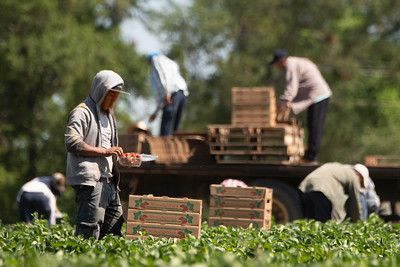Continued Increase in Labor Costs on the Horizon
Published
6/18/2025
Labor challenges are among some of the most difficult issues facing farmers and ranchers, especially for those who utilize the H-2A program. John Walt Boatright, director of government affairs for the American Farm Bureau Federation, explains how the program works.
"The H-2A Program is the temporary and seasonal guest worker program that many farms and ranches are increasingly relying on for their farm labor needs. It's set by USDA’s Farm Labor Survey, which is updated annually," Boatright said.
The Labor Department then uses USDA survey data to calculate the Adverse Effect Wage Rate, or the minimum wage farmers must pay guest workers. However, recent increases in the rate have been difficult for farmers and ranchers to sustain.

"It's outpaced inflation eight of the past ten years. It's highly unpredictable from year to year," Boatright said. "We've seen increases as high as 23 percent from one year to the next, which is just simply unsustainable given the challenges that we see and the predictability that farmers and ranchers need to be able to make ends meet."
Boatright said that while 2026 rates haven’t been calculated yet, all signs point to another increase in the rate, when labor costs are already high.
"Of farms and ranches who particularly utilize H-2A, it is right at 40 percent of their input costs are associated with labor," Boatright said. "I think we can anticipate that a lot of these costs are going to increase as a direct result of that, and that's directly attributable to federal rulemaking that has made it more onerous for small family farms, particularly, to stay afloat."
More information will be shared on the American Farm Bureau's Market Intel page at fb.org/market-intel for more information.
Want more news on this topic? Farm Bureau members may subscribe for a free email news service, featuring the farm and rural topics that interest them most!
